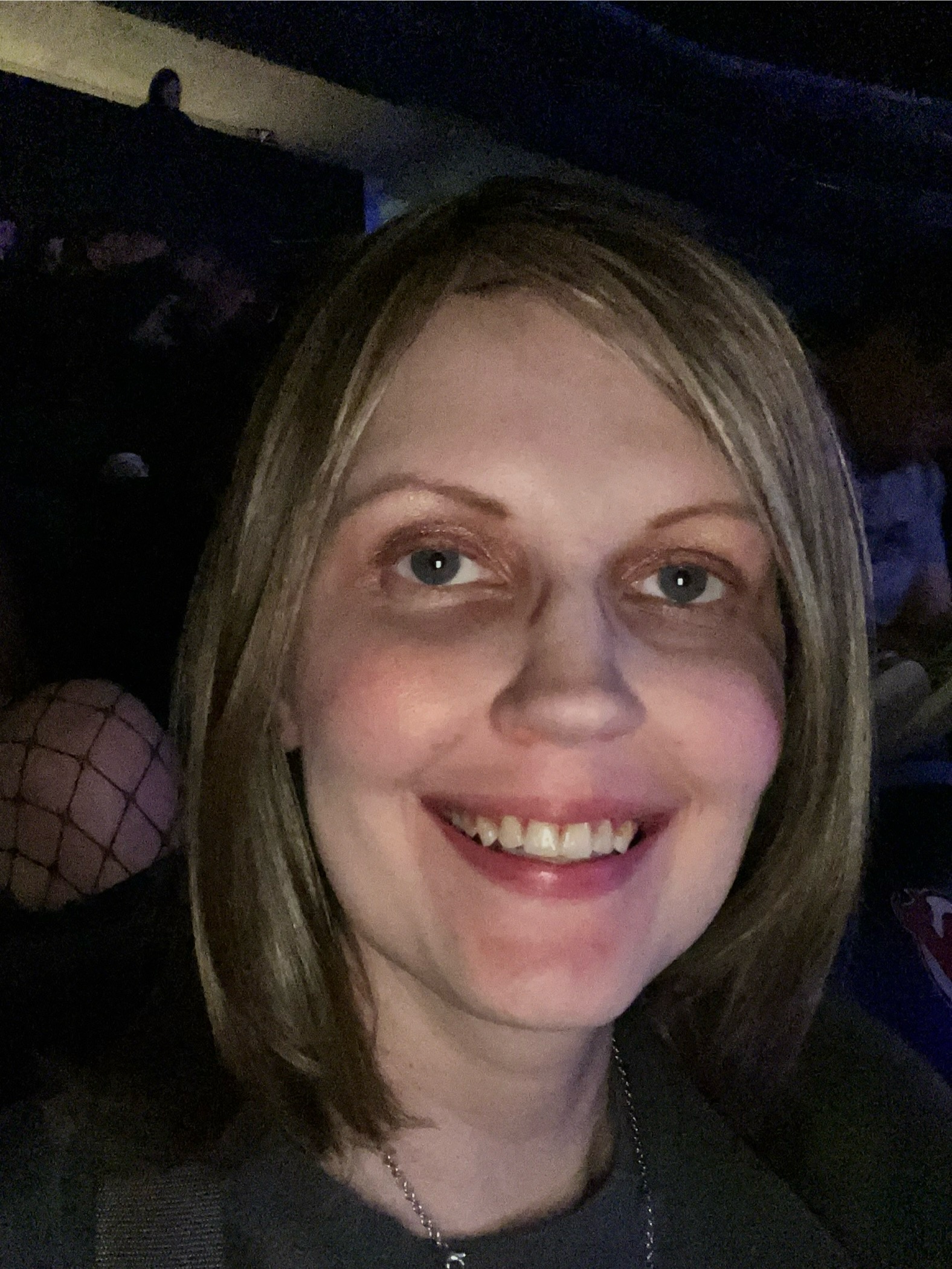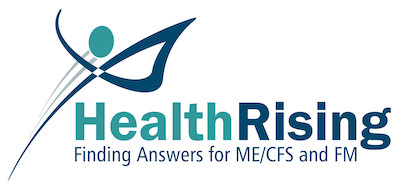We in the U.S. looked on in dismay as Norway ponied up some major krone (Norwegian dollars) for a large Rituximab ME/CFS trial while the mighty U.S. medical establishment sat on its hands. It wasn’t just weird – it was embarrassing. Here was a potential breakthrough in a disease that everyone in the federal establishment said is a priority for them – yet not a finger was moved. When even Simon Wessely asserted that Rituximab should get a trial – and the U.S. still stayed mute – something seemed very wrong
In retrospect the reason seemed clear: the federal government doesn’t do drug trials – they are the purview of the pharmaceutical companies. In the U.S. the marketplace rules. If you can get a drug company to pay for a drug trial you have a shot. If you can’t get a drug company to do that you’re out of luck…
That sounded right ( it made me feel a bit better but in fact it was completely wrong). The National Institutes of Health (NIH) does fund drug trials and it’s doesn’t just fund a few of them – it funds lots of them.
In retrospect that only makes sense. Why would the biggest medical research funder in the world leave the fruits of its labors – treatments – entirely in the hands of drug companies? Why would it leave the marketplace entirely in charge of such a vital factor? It wouldn’t and it doesn’t. The National Institutes of Health spends a nice chunk of change on drug trials every year.
The Missing Piece
That only begs the question, though, why two small but successful Rituximab trials were not enough for the NIH to step in? Or why Ampligen – which the FDA now says is safe – and only needs further confirmation of its efficacy – is still sitting by the wayside?
The answer seems to be that neither chronic fatigue syndrome’s current home, the Office of Research For Women’s Health, nor it’s parent, the Office of the Director, funds clinical trials. From what I can tell only the Institute’s fund clinical trials and ME/CFS, of course, is not in an Institute (yet).
Four ME/CFS Trials

Why is the NIH funding trials in other diseases but not ME/CFS? One reason – ME/CFS is not in an Institute
I can think of four drugs or drug combinations in ME/CFS urgently looking for funding. The Pridgen Protocol would certainly qualify for fibromyalgia.
- Ampligen
- Rituximab
- Synergy methylphenidate/supplement combination
- The drug combination uncovered by the Biovista Solve ME/CFS Initiative project
Ampligen – the Greatest Concern
Ampligen is probably the greatest concern right now. Norway is funding a major Rituximab trial and Invest in ME in the U.K. is on track to fund another, but Ampligen – which doctors strongly support – is basically on life-support. Hemispherx cannot afford the studies the FDA requires and the marketplace is not stepping up.
Ampligen’s producer – Hemispherx Biopharma – recently cited needed laboratory upgrades as a reason to more than double Ampligen’s price in the U.S. That’s obviously going to present a severe hardship to the couple of dozen or so patients taking it in the U.S. More than anything else, it underscores the need to get this drug approved.
Rituximab – the Breakthrough Waiting (and Waiting) to Happen
Rituximab is the other biggie. It’s an expensive drug that requires long drug trials but it did very well in two small studies. Given the drugs popularity it’s not surprising that some Institutes are funding Rituximab trials. What is surprising is how many they are funding.
The National Institute of Neurological Disorders and Stroke (NINDS) is funding one for myasthenia gravis and the National Institute of Allergic and Infectious Disorders (NIAID) is currently funding four Rituximab trials (Anti-cytokine Autoantibody-Associated Diseases, lupus nephritis, Systemic Sclerosis-Associated Pulmonary Arterial Hypertension (SSc-PAH) and renal transplantation. NIAID recently completed Rituximab trials in diabetes (which it is not responsible for), kidney transplantation, lupus and Sjogren’s Syndrome.
The myasthenia gravis trial stands out because it’s funded by the National Institute of Neurological Disorders and Stroke (NINDS) for a rare disease (<75,000 people /U.S.). This year-long trial will take place in no less than 26 locations and include 50 people. (ME/CFS researchers work at or have worked with several of the study locations (University of Alabama at Birmingham, Emory University, Columbia, Ohio State University, University of Utah). It will finish up about the time the Norwegian Rituximab trial finishes up.
These trials are not anomalies.
The National Institute of Neurological Disorders and Stroke (NINDS)
Talk has been swirling that National Institute of Neurological Disorders and Stroke (NINDS) is interested in ME/CFS. If you want to get a drug trial funded you could do worse.
A search on Clinicaltrials.gov suggests NINDS probably funded somewhere around 60-70 clinical trials this year. It funds several different kinds of trials. It seeks to find new applications of FDA approved drugs (gabapentin – fibromyalgia) or it funds studies of entirely new drugs (E-selectin – stroke, AAVD2-GDNF – Parkinson’s). It funds trials on its own or in collaboration with a drug company or hospital or other entity.
In fact, NINDS is so interested in exploring new treatments that it’s begun a separate initiative called NeuroNEXT (Network for Excellence in Neuroscience Clinical Trials) whose goal is to “respond quickly as new opportunities arise to test promising treatments”. NeuroNEXT recently created a clinical trials methodology course to assist junior investigators in developing the best clinical trials.
Some NINDS’ Sponsored Clinical Trials for 2015
These are NINDS sponsored clinical trials that popped up in the first three pages (of a seven page result) of a search on Clinicaltrials.gov.
- Guanabenz in multiple sclerosis
- The effects of magnetic stimulation on motor functioning
- Idebenone for Primary Progressive Multiple Sclerosis
- Levetiracetam in Oromandibular and Cranial Dystonia
- Phase 2 Clinical Trial of SGS-742 Therapy in Succinic Semialdehyde Dehydrogenase Deficiency
- E-Selectin Nasal Instillation to Prevent Secondary Stroke
- Methylphenidate – Traumatic Brain Injury
- Functional Electrical Stimulation – Stroke
- Anakinra – Neuroinflammation in HIV
- Antiretroviral Therapy in Volunteers With Amyotrophic Lateral Sclerosis (ALS)
- scAAV9/JeT-GAN for the Treatment of Giant Axonal Neuropathy
- Neurofeedback in Stroke
- Raltegravir for HTLVI
- AAV2-GDNF for Advanced Parkinson s Disease
- Deep Brain Stimulation for Movement Disorders
- Acthel for Cushing’s Disease
- Dac Hyp for Multiple Sclerosis
- Surgery – Intractable Epilepsy
- …….
National Institute of Allergic and Infectious Disorders
If NINDS’ slate of clinical trials is impressive, NIAID’s slate is off the charts. A NIAID search brought up fifteen pages of results – about twice as many an NINDS. (Many of these are not actually clinical trials)
- Vaccine (FSME-IMMUN 0.5 mL Baxter) Against Tick-borne Encephalitis (TBE) for NIAID Workers Manipulating Tick Borne Encephalitis Virus (TBEV) in the Laboratory
- Ustekinumab for Symptomatic Gastrointestinal Inflammation Associated With Common Variable Immunodeficiency
- Bone Marrow Stromal Cells for Inflammatory Bowel Diseases
- Single ZMappTM Administration in Healthy Adult Volunteers (Ebola drug)
- Benralizumab in Subjects With Hypereosinophilic Syndrome
- AVI-7100 Flu Drug in Healthy Volunteers
- Anti-IL5 Antibody (Reslizumab) for the Reduction of Eosinophilia Following Diethylcarbamazine Treatment of Loa Loa Infection
- Imatinib Mesylate to Treat Myeloproliferative Hypereosinophilic Syndrome
- Elite Controller and ART-treated HIV+ Statin Versus ASA Treatment Intervention Studies
- Dengue Vaccine (TV003) in Healthy Adults, Adolescents, and Children in Thailand
- ……..
National Institute of Arthritis and Muscoskeletal Disorders (NIAMS)
In 2007 NIAMS reported that a 150 person NIAMS funded double-blind trial found gabapentin could be helpful in fibromyalgia. (Interested in having NIAMS fund your study? Use this application here.)
NIAMS is even funding studies on HIV and diabetes – neither of which it is responsible for. Some of the trials NIAMS is currently funding, co-sponsoring or collaborating on include:
- TNF Alpha Inhibitors in Rheumatoid Arthritis
- Omalizumab for Lupus
- Resistance exercise in juvenile rheumatoid arthritis
- JBT-101 in Subjects With Dermatomyositis
- Strength Training in Duchenne Muscular Dystrophy
- Atorvastatin for Microvascular Endothelial Function and Raynaud in Early Diffuse Scleroderma
- Nelfinavir in Systemic Lupus Erythematosus
- Allopurinol in Inflammation, Endothelial Function, and Blood Pressure
- …….
The FDA
The FDA was nothing but hostile at the Ampligen hearing, but since the Patient Conference they’ve been very helpful in helping to legitimize ME/CFS. Their acknowledgement that ME/CFS is a serious disorder on a par with diseases such as heart and kidney failure surely is helping to change the conversation about ME/CFS in the federal government.
The FDA does help fund drug trials – for rare diseases. They allocated $14 million for funding drug trials into rare diseases in 2015, and they expect to increase funding numbers over the next couple of years.

The FDA is funding trials for rare diseases that get no help from drug compannies…Why not ME/CFS as well?
ME/CFS is not a rare disease but it’s in much the same situation as rare diseases: it has large unmet drug needs and few, if any, drug companies are interested in producing drugs for it. The FDA apparently simply didn’t believe or envision that common disorders would not get interest from the drug companies. If they had they might have created a pathway for funding to flow to them.
The FDA official overseeing the ME/CFS program – Janet Woodcock, however, is one of the top officials at the agency. If anyone could get the FDA to commit funds to support an ME/CFS drug trial she could.
The FDA is continuing to get pressure to do something about Ampligen. A slate of ME/CFS experts recently called on the FDA to hold a two day conference to assess and find a way to get beyond the hurdles Ampligen faces there. They now recognize that the drug is safe; their only concern is efficacy – and proving that in a larger trial.
Conclusion
The NIH regularly funds drug trials but only, it appears, at the Institute level. That, of course, leaves ME/CFS out of luck. Moving into an Institute could, however, give ME/CFS a shot at getting one of its urgently needed drug trials funded. The bottom line is that ME/CFS needs to be in an Institute not just to get better research funding but to get help with drug trials.
The FDA also funds drug trials in diseases that drug companies aren’t interested in. The catch is that they are rare diseases. ME/CFS is not a rare disease but it is in the same boat that rare diseases is in. The FDA has the right idea with the rare diseases program; it simply needs to apply that idea to ME/CFS.
Ampligen is one medium-sized trial away from being the first FDA approved drug for ME/CFS, and the Institutes regularly fund Rituximab trials. Both drugs would be strong candidates for NIH/FDA funded drug trials should ME/CFS get into an Institute.








Cort, I don’t get your passion for Ampligen. My understanding is that it’s results have been very mixed indeed, far from convincing.
Perhaps you could provide your case?
Mixed compared to what?
It’s easy. I know of several people who the drug is keeping alive…..They go on the drug they do much better. They go off the drug – they fall apart.
Thanks cort for using your time and energy to try to unravel why we are not seeing drug trials for me/CFS and how that compares with other illnees. It seems we need a campaign for me/CFS to be moved to an institute with utmost urgency and as part of a series of steps we need to take to see progress. I’m in the UK but would support it.
Thanks Kath for your support – being in an Institute is clearly necessary to accomplish much in the NIH – not only with regards to research but with regards to clinical trials.
Yes, clinical trials are very important. I do get dismayed at having to go on drugs lifelong. Honestly, I think AIDS patients were ripped off of the research money put into their disease. I believe they could have a cure and prevention much like Ebola now has but I think the drug companies want to keep that money train going.
I don’t know if there is some sort of active virus in us and for most of us I tend to think not but… I think our Neuro-immune system has been set into such a state that it has to be reset and there is a researcher that Dr. Klimas had at her clinic that went over the need for this to occur.
They see ME/CFS and Gulf War Syndrome is hitting the same Cytokines and he believes the answer could lie in a reset of the immune system. THAT would be the next great breakthrough in so many autoimmune and Neuroimmune diseases.
Cort, I’m wanting to be sure that I have the concept of “Institute” correct. One could use some different words, I suppose, but you mean to allow ME/CFS to become the belonging of a single group, clinic, COE, or institute of higher learning? Instead of its current fractured place have it belong to one agency, one division, out of Women’s Health… but then have to have more of a designated arena? Like the new CFIDS Association of America’s group of the CDC or who? I know I’ve been carrying on about needing a national org for ME/CFS because it would seem to hold some power and authority though I don’t really know. It just seemed what each other disease rare or not has. Why not us? Anyway, a bit more elaboration, please? marcie myers
How can we help move our cause to an Institute? There are so many advocacy/policy calls right now. It’s overwhelming.
I sure wish we had an organization focused on advocacy and manned by non-profit professionals with full health. We can’t make everything happen through our efforts alone, nor can we fund it all through crowd sourcing.
I agree Carolyn. I think that’s really needed.
I’m hoping that some efforts will congeal over the next couple of weeks and a broad range of organizations will mount a drive to get us into NINDS. (NIAID doesn’t seem to be a possibility).
I know that people in this community are in touch with NINDS and there is real hope – but nothing is solid yet.
Hi Carollyn-
#MEAction is working on a project to lobby Congress to get ME/CFS moved to NINDS and to increase research funding at NIH. You can find out more about the project at http://www.meaction.net/2015/08/17/lobby-congress-for-nih-funding/ and http://news.sciencemag.org/biology/2015/08/lobbyists-seek-250-million-new-funds-chronic-fatigue-syndrome-research. Our consultant has already met with staffers for around ten Senators on the HELP committee and has received very good feedback.
The one-pager that we are giving to Senators to present our case can be found at http://www.meaction.net/wp-content/uploads/2015/08/ME-Action-One-Pager-1.pdf
Please let me know if you have any questions. I completely agree that we need healthy staffers and allies to help out.
Thanks for the links, Beth, though I’ve already taken these actions and receive email updates. If others reading this have not–jump on with the rest of us!
Cort, thank you for this well-researched and extremely informative publication.
If I have understood correctly, It would seem that the reason Ron Davis’s proposal was rejected is due to the fact that ME/CFS is in the Office of Research for Women’s Health? Yet that is not what was stated anywhere in the reasons for the rejection. This is all rather mind-boggling.
Do you know what the process is for getting ME/CFS moved to NINDS?
Thanks again.
I think Ron hit a group of very uninterested reviewers! They were so uninvolved as to be embarrassing. This was a different group, though, than usually reviews ME/.CFS grants. I would bet good money that this group had NEVER come across an ME/CFS grant proposal before – and it showed. My guess is that that was a major problem with this grant.
There is a grant section set up specifically for ME/CFS. Davis chose a different route. It revealed some real problems at the NIH.
All I know about the process about getting into an Institute is that someone in that Institute has to stand up and say “We should take ME/CFS in” – and then fight to have that happen. Someone in NINDS has apparently said that. Whether they will be able to get us in is unclear.
We can only help by applying political pressure.
Oh, that is very exciting that someone in NINDS has said that.
It is quite apparent that this has neurological components but possibly because it may not have ongoing infectious issues that NIAID is not interested. Well, I’ll take NINDS!
I had no idea that ME/CFS has a grant section.
I’m with Sue – I’ll take NINDS!
Many of us have written letters and made calls to Congress, etc. As individuals is there anything more specific that we can do to apply political pressure to get into NINDS? If we have contacts at the NIH but at Institutes other than NINDS, would they have any influence on the process?
Thanks, Cort!
I would like to see xyrem studied in cfs/me as sleep dysfunction is one of the worst symptoms many suffer from. Also more research dollars into other newer sleep aids for cfsme.
One study showed alpha intrusions in ME/CFS – which is what Xyrem – but no Xyrem studies in ME/CFS yet.
Excellent blog, Cort! Great research, just what we needed.
Thanks Anne O – encouraging, huh?